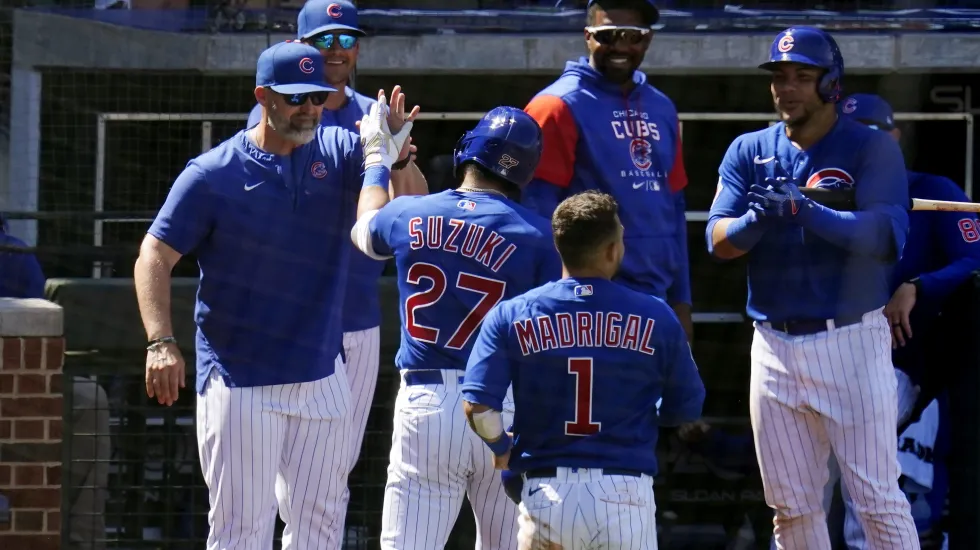
Asked about .143-hitting reserve outfielder Clint Frazier before the Cubs’ game Thursday against the Pirates, manager David Ross took the opportunity to express his disdain for one of the inherent evils of early-season baseball: the small sample size.
‘‘We want to put all these labels on — whether it’s our offense, our defense or our pitching — and we’re still only 11 or 12 games in,’’ Ross said during the pregame news conference he holds before virtually every game of the season. ‘‘I just think that’s unhealthy.
‘‘I’m here to talk about anything you [reporters] want to talk about. But just letting these guys continue to figure out roles and figure out how they’re gonna be used . . . especially guys that have [hit] in the minor leagues pretty consistently, like Mike [Hermosillo] or [Frazier], who is used to normal at-bats. It’s an adjustment. But we have to be patient and give them some time, too.’’
Preaching patience is a tough chore in a big-league city when every game is analyzed and overanalyzed — by the fans, the media and the team’s own broadcast network.
It’s early. The weather in Chicago has been mostly miserable since the start of the season, including the game Friday against the Pirates, which was pushed back from 1:20 p.m. to 7:05 p.m. because of inclement weather. The short spring training after the lockout has put starting pitchers on the shortest leash ever. Only once in 13 games has a Cubs starter thrown a pitch in the sixth inning, and that was Kyle Hendricks against the Brewers on Opening Day.
Progress is hard to see on the rebuilding Cubs. On back-to-back nights against the Pirates, they started 31-year-old Mark Leiter Jr. and 32-year-old Drew Smyly. Their closer is 37-year-old David Robertson. While outfielders Seiya Suzuki (27) and Ian Happ (27) are young, productive players, the Cubs have only two players younger: shortstop Nico Hoerner (24) and second baseman Nick Madrigal (25). How many players on the roster will be on the next Cubs playoff team? ‘‘That’s a good question’’ is the most popular answer.
In a 162-game season, progress is so incremental that it’s often hard to identify. But Ross said he sees it.
‘‘A vision is different than what reality is, right?’’ Ross said. ‘‘Can you envision what things will look like? Sure. My mind works in a positive light, too. Things don’t always happen, and there’s a lot of adversity that comes in our game. Can I see where things are headed here? Sure. Is that reality? Not yet.’’
A rebuild isn’t quite what Ross signed up for when he replaced Joe Maddon after the 2019 season, but he seems to enjoy the process of managing a developing team. Some of the progress isn’t visible to the naked eye, however.
‘‘I get satisfaction out of guys getting better,’’ Ross said, ‘‘whether it’s a skill set, whether they get stronger, faster, the instincts grow. The things we want done around here start to show their face.
‘‘I thought . . . just [the] baserunning mindset the second half of last year, guys got a lot better on the bases and did a nice job of paying attention. Some guys that were not as good got better.
‘‘I get satisfaction out of guys rootin’ for one another, the vibe in the clubhouse, the vibe in the dugout, satisfaction from our coaches growing. There’s a lot of satisfaction to be had. At the end of the day, it comes down to wins, and how that contributes to wins is what makes me satisfied.’’
In that respect, there is still a long way to go. But Ross sees where this team is headed and thinks it’s in the right direction.
‘‘I hope so,’’ he said. ‘‘I’m the one leading this group, right?’’







